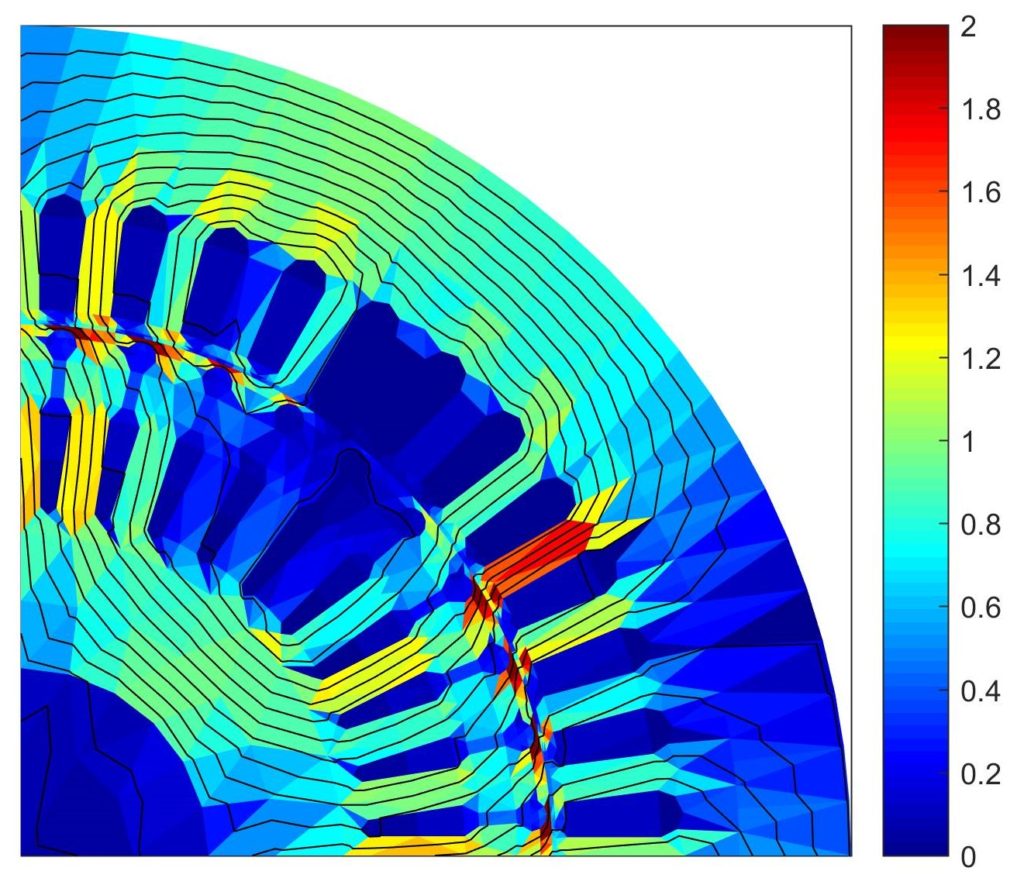Stand by for SMEKlib
Hi people! I have so many things on my plate right now, that I thought I’d better write a news-style post. Might be a nice change of pace anyway, after all the FEM-related stuff.
Dissertation
I’m two months into my fourth year as a Ph.D. student. Or a doctoral student, like it’s called here. The nominal time for finishing is four years.
Which is somewhat misleading, in my opinion. Given the length of the pre-examination procedure, graduating in four years means submitting the thesis after three an’ a half.
Which means writing my thesis just about now. Which is indeed what I’m doing right now.
So, dear readers – wish me luck, and sorry if my posting frequency drops a bit!
Free Course on FEA – for now!
You may have noticed that nasty little pop-up on the lower-right corner, advertising my newsletter.
Click here to subscribe, by the way 🙂
Well, as per the unwritten law of the Internet – I’m now offering a freebie for those willing to sign up.
In this case, the freebie in question is a course on Finite Element Analysis. The course covers the fundamentals of FEM, and teaches you to code your first FEM program in Matlab or Octave. With the program, you can analyze 1D problems, e.g. the electric field inside an insulator.

I must stress that this is indeed a limited-time offer. The course will offered for a certain number of new subscribers only – after that I’ll probably be withdrawing it. I’ll be honest about it – I’d hope to make some pocket money from it later.
Indeed, that boat has left the harbor. The course offer is expired.
But worry not. Old subscribers (meaning those registered before the course-withdrawal) will be able to access it just fine.
So, better be quick:
SMEKlib to be Published OpenSource
During my three years as a researcher, I’ve written quite a many lines of Matlab code. Most of that single-use, crap, or single-use crap. But I’ve also gradually built a nice library for FEA analysis of electrical machines.
Simply put, I have all the necessary functions for time-stepping or time-harmonic analysis, with rotation or not, with voltage or current supply, with or without eddy currents, linear and nonlinear problems.
You can read a bit more by clicking here.
Now, I’ve decided to publish my code OpenSource in the near future, under the work title SMEKlib. (from the Finnish word for electromechanics = sähkömekaniikka –> SMEK).
I haven’t decided the exact license yet, but most likely it’ll be either MIT or BSD of some kind. Meaning it will be quite easy indeed to adapt for industrial and academic use both. Heck, you could even wrap it up and sell it as a part of your own software, as long as you meet the attribution requirements. And are ready to stand my wrath.
Stay tuned for updates!
UPDATE: SMEKlib is now out!

Christmas
The most wonderful time of the year is approaching. Which means lots of gift-shopping, even if you adopt the sensible route of only one present per important person.
December is also the month for several pre-Christmas parties, the birthdays of me and Finland both (5th and 6th respectively), and good food in general.
Less time for posting – more time for dieting come January.
Best,
-Antti
Check out EMDtool - Electric Motor Design toolbox for Matlab.
Need help with electric motor design or design software? Let's get in touch - satisfaction guaranteed!

Great! Looking forward to it.
Does SMEKlib use 1st order element or 2nd order?
Thank you! 🙂 It only has first-order elements for now, but I have used second-order (and higher, actually) shape functions in some collaborative works. Haven’t tried curved elements yet.
However, both will probably be added to the code quite soon. After all, it’s only a minor change to the matrix assembly routines, and the moving band mesh 🙂
I don’t understand the meaning of colour flux density and flux lines.
Hi! The color scale is the absolute magnitude (or norm, if you like) of the flux density vector B.
The flux lines, on the other hand, are such lines that at any point on the line, the line is tangential to B. So the lines are illustrating how the flux flows in the machine. Furthermore, between any two lines, the total amount of flux stays constant.
hope this will help many people dude, can i share it?